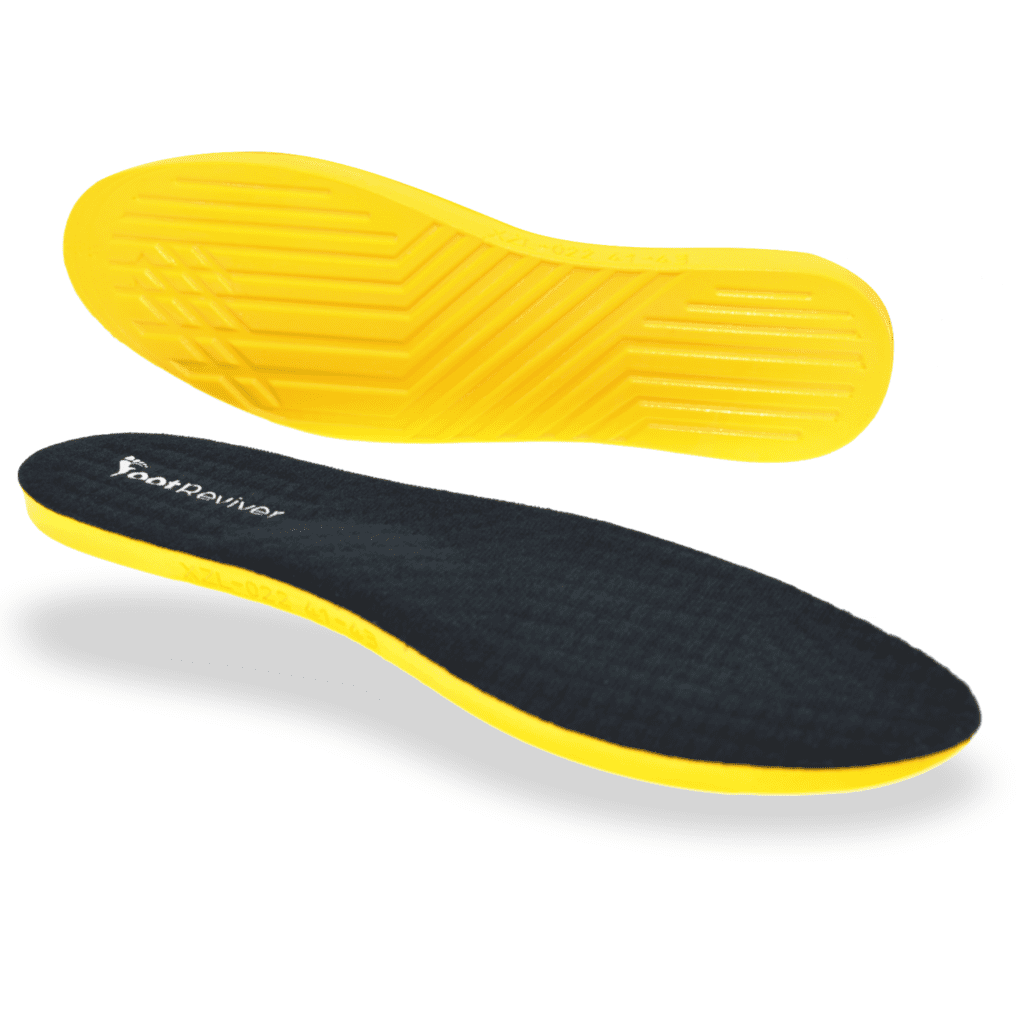No products in the cart.
What are the best arch support insoles for plantar fasciitis?
Plantar fasciitis can make daily life far more difficult and more uncomfortable. That is why it is a good idea to avoid getting it by ways of prevention using orthotics than just doing nothing and waiting to get plantar fasciitis and then doing something about it by treating it with ways that you could have done to help prevent it earlier.
Athletes tend to suffer from plantar fasciitis due to them overusing and causing inflammation of the plantar fascia. Many athletes will suffer at some point from plantar fasciitis when they really could have avoided it by simply doing some proper stretches of the feet and wearing proper insoles in their running shoes.
It not just athletes who suffer from this condition but people who are overweight also have a much higher chance of getting plantar fasciitis because of the extra weight they carry adds extra pressure on the plantar fascia which it cannot cope or designed to deal with meaning it can more easily tear or be damaged.
How to prevent and treat Plantar Fasciitis
The best ways to prevent and/or treat plantar fasciitis is by swapping flat insoles in your shoes for some special arch support plantar fasciitis insoles. With the specially adapted orthotic that offer better support for the arch of your foot and plantar fascia will make plantar fasciitis a thing of the past.
Standard flat insoles found in many shoes than you buy offer little or no arch support at all. Support is needed because as we get older the muscles and tissues that help to support the arch of our feet will get less strong and flexible… with the constant strain of gravity on our arches along with a busy life where we are always on our feet running from one place to the next creates a lot of pressure on our arches, the risks of developing plantar fasciitis are stacked against us. But thankfully all we need is better supporting orthotic insoles to help alleviate some of this strain and pressure from our arches.
By wearing arch support insoles, pressure and tension is took off the plantar fascia and this reduces the risk of tearing it. Not only will special orthotic help to support your arch but they also help to cushion any unwanted pressure or shock that could harm your feet as you walk or run.
Arch support insoles are also recommended and prescribed by podiatrists to help ease and treat other foot and lower limb injuries and conditions including Achilles Tendinitis, Ankle Instabilities, Atrophy of the Fat Pad, Blisters, Bone Spurs, Bunions, Collapsed Arches, Corns, Cuboid Syndrome Diabetes, Metatarsalgia (ball of foot pain), Morton’s Neuroma, Pes Cavus, Sesamoiditis, Splayfoot and weak arches.
You can buy orthotics here at NuovaHealth where we have a wide range of orthotics and insoles to help anyone. If you have any further questions in regard of plantar fasciitis or orthotics to help prevent plantar fasciitis please comment below and I will be happy to answer any questions you may have.
Our Handpicked selection of the best arch support insoles & footcare products to help treat plantar fasciitis

Arch Support insoles for Plantar Fasciitis & Flat feet – Only £9.99
These specially designed arch support insoles are ideal for anyone suffering from Plantar fasciitis wanting to give their feet extra support and protection and improve their recovery. The orthotic arch support that these insoles provide will help to take strain and pressure off your feet and fix biomechanical imbalances and gait problems such as Overpronation which can cause Plantar Fasciitis.
The lightweight, breathable design of these insoles means they can be fitted inside virtually any type of shoes quickly and easily and are perfect for any wearing whilst running or playing sports. They are made from comfortable shock absorbing materials to protect your feet from damage allowing you to make a full and proper recovery.

Pronation Insoles For Overpronation By FootReviver™ – Only £13.95
These Pronation insoles have been designed by the foot experts at FootReviver™ to help correct Overpronation a common cause of Plantar Fasciitis. They work by titling your feet when you walk or run into the correct position to prevent overpronation. By fixing overpronation in your feet these insoles will help to prevent excessive strain and pressure on your feet that can cause foot and lower limb injuries including Plantar Fasciitis, Metatarsalgia, Heel Spurs, Achilles tendonitis, Shin Splints, Knee tendonitis and more!

Orthotic Insoles For High Arches By FootReviver™ – Only £9.99
These Insoles for High Arches by FootReviver™ have been developed to help people who suffer from high arches or flat feet wanting to support and take strain and pressure off them. Wearing these insoles will help to realign your feet and fix gait problems that can contribute to foot pain and injuries. They have been made from shock absorbing materials to better protect your feet and improve your recovery and are ultra-lightweight and breathable. This makes them perfect for runners and athletes who are at greater risk of developing foot injuries such as Plantar Fasciitis and Achilles tendonitis.

Supination Insoles For correcting Underpronation – Only £16.95
Underpronation when you walk is one of the most common reasons why people develop Plantar Fasciitis. Whilst pronation is a natural part of gait is underpronation not and can place excessive strain and abnormal load on your arches. Overtime this abnormal load can cause them to become inflamed and damaged. Wearing a pair of these Supination insoles can help fix the way your feet pronate by supporting them in the correct position during gait. Thes insoles have been designed using the very best materials that will not only support your feet but also protect them from shock and vibrations and will prevent pressure points from developing and damaging your feet as you recover from Plantar Fasciitis.